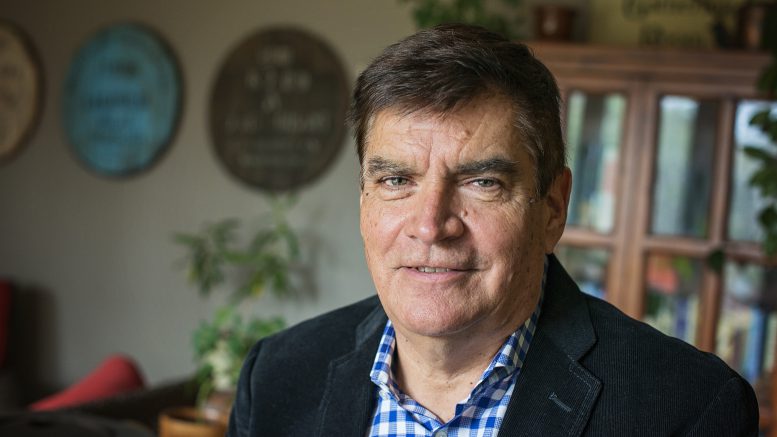In Ontario, Anishnawbek peoples have been mining copper for more than 4,000 years. They practiced sustainable mining methods by limiting their disturbance to the land, mining what they needed to sustain their communities and shared the benefits through trade of their metals and minerals with other Indigenous communities throughout North America. They practiced sustainable mining while protecting their environment and peoples. With Indigenous leadership in impact assessments, sustainability in both mining and the Indigenous community can continue today.
However, in more recent times, Indigenous decision-making in mining and their role in environmental stewardship has diminished. These once vibrant Indigenous mining communities now play a minor role in mineral exploration, development and operations happening in their own backyard.
At the same time, industry is facing growing uncertainty around mineral projects that have the potential to impact Indigenous communities. To reach more certainty of investment, for not only the mining companies, but for impacted Indigenous communities, both groups must work together on the ground. One solution to this uncertainty is to embrace the community’s leading role in the impact assessment (IA) process to create a more sustainable future for generations to come, to minimize permitting delays and to provide potential cost savings to project proponents.
I have participated in the IA process and in mining from all angles — government, industry and Indigenous over the past 30 years. Much of this experience was gained through the Canadian Aboriginal Minerals Association (a group co-founded by myself and eight other Indigenous leaders), with Environment and Climate Change Canada, numerous mining companies and with several Indigenous communities, including my own, Wahnapitae First Nation, and other communities in the Robinson Huron Treaty area.
I was also a Joint Review Panel member for the Northern Gateway Pipeline and Grassy Mountain coal projects, hearing from governments, lawyers, almost 90 Indigenous communities (youth, elders, parents and leaders) and a spectrum of advisors and consultants, and others, on the merits of the project. Both of these projects were ultimately not approved, but I often wondered what the outcome would have been if the communities had led the environmental work.
Indigenous communities want to restore their societies, renew or maintain their relationship to the lands and have governance over their lands and resources through their interest in the mining sector. They wish to build relations where there will be compatibility between mining industry and business groups to support each other. The April federal economic statement and budget, including section 7.3 Advancing Self-Determination and Prosperity, acknowledges and supports the ongoing development of a benefits-sharing framework that seeks to ensure Indigenous nations benefit from future resource development projects. Specifically, the budget is “….dedicated to early engagement and Indigenous communities’ capacity building to support their participation in the critical minerals strategy. These investments will provide opportunities for Indigenous communities to benefit from all types of natural resources projects, including critical minerals.”
High cost of uncertainty
In the past few decades, there have been hundreds of settled court cases dealing with lands and Indigenous rights, with hundreds of Indigenous legal wins to date. The legal uncertainty for both the mining industry and Indigenous community comes with lengthy trials and judicial reviews. Indigenous rights litigation has focused largely on challenges to project approvals or permits and the scope of “adequate” consultation. Increasingly, lawsuits seeking damages and other relief for title or rights infringement are before the courts. As long as these grievances are outstanding, resource development can be delayed or may not happen.
This uncertainty is not only attributed to the judicial landscape, but the exercise by Indigenous groups of underlying, inherent Indigenous law and title. These interests are causing disruptions to the mining sector. The courts have come to acknowledge this and the credibility of Indigenous legal systems (Indigenous laws) that were not extinguished by Canada’s assertion of sovereignty over these lands.
Add to this the cumulative impacts of industrial development that have for years been at the forefront of Crown consultation and land management. More recently, Indigenous groups have launched lawsuits against the Crown seeking declarations that these cumulative impacts have infringed upon rights they hold under historic treaties, and court orders that would have an impact on the Crown’s ability to approve future development.
Industry is often heard saying that “we spent millions of dollars on our impact assessment process and the project was still not approved.” The current push seeks more impact scrutiny by governments and also by affected communities.
I believe that Indigenous-led impact assessments can be efficient, save time and money and ultimately lead to project approvals.
Communities having greater control over key decisions in project design, infrastructure and impact management are critical to future community acceptance and consent. This can only be done through direct community involvement in the impact assessment process.
Indigenous community knowledge about their environment, economic plans, rights and interests, governance, history, health and social conditions can strengthen an impact assessment. These topics must move from just being “considered” by industry and government to “must be incorporated” into any impact assessment. In addition, the community’s input on impact mitigation and planning needs to be included in the assessment process. This information can best be obtained through developing a personal, trusting relationship with the community.
Moving forward, all mineral projects will require an impact or environmental assessment. All will require governments to engage and consult with Indigenous communities. All will require the company to undertake the procedures, to facilitate government consultation requirements.
With the federal Impact Assessment Act (Bill C-69) now in place, Aboriginal and Treaty rights, health, socio-economic considerations, governance, traditional and current land and resource use, and all connected aspects are to be included in baseline studies in impact assessments for designated mine projects. Several sections of the Impact Assessment Act, such as S. 29 and others, also provide for opportunities for Indigenous involvement in managing the impact assessment process.
A different approach
The project approval process involves conducting impact assessments of projects to meet not only the regulatory requirements but the company’s own environmental, social and corporate governance (ESG) policies and related policies to protect communities, society and shareholders.
Indigenous-led environmental assessments are the way of the future. Mining companies shouldn’t be afraid of this shift — provided they are prepared to listen and work directly with communities. This means companies need to adopt a different approach. Rather than sharing charts, maps and flashy reports in a first meeting, mining companies can put the community first, asking: “What can we do together to support your community members and their livelihoods?” Using that question as a starting point can act as a foundation for discussions on the environment, community socio-economics and collaboration toward an impact assessment.
What is the difference between a mining company-led impact assessment and an Indigenous-led impact assessment process? The most significant difference is whether the assessment is conducted solely by the Indigenous group or in close collaboration with industry and/or government.
At present the company initiates the management of the process. Mining companies normally contract out most of the impact assessment work, including Indigenous studies and consultation, to an environmental consulting firm, which sub-contracts to subject matter experts that do the research and reporting.
But what if Indigenous communities took the same lead position on behalf of the company for overseeing the impact assessment tasks and process, or in a co-venture with the mining company to conduct the impact assessment, including the joint selection of consultants? Unlike the mining company which may depend on desktop or literature searches, Indigenous communities have access to first-hand community social, economic, health, cultural, tangible and intangible knowledge and more importantly, extensive knowledge of lands, flora and fauna and community uses. Combine this with the knowledge of partner experts such as biologists, archaeologists, geologists and others, the community’s knowledge is included alongside Western scientific knowledge with equal importance.
I have been involved in leading the Indigenous management and coordination of the collection and analysis of biophysical, socio-economic and traditional knowledge to support mine proponent environmental impact statements and assessments. Some of these environmental studies supported mine closure plans and submissions for permitting. I have also supported my own community in leading an environmental assessment for a tailings gold recovery project, an ore processing facility (Xstrata Smelter), and ferrochrome processing facility scoping, among others, in the Sudbury area. While my community had its subject matter experts, we were also guided by the regulators to meet their permit and application requirements.
My current activity with Odonaterra is in supporting Indigenous communities who wish to play a lead role in all or part of an impact assessment process. With Odonaterra, we have supported many communities in leading assessments. Odonaterra is currently supporting a northern Quebec Cree community, which is taking a lead role in the social-economic impacts assessment of a gold mine in their traditional territory.
This level of involvement ensures that the community plays a significant role in project decisions that will affect their livelihoods and future generations. I acknowledge that this concept is new to the industry, whether a junior or major company, and that many from industry may wish to maintain the status quo by controlling who collects data, how data is interpreted and what to report in their applications. Moving beyond the “check box” or “as we need the community” approach, and towards complex impact benefits agreements will require regular dialogue, sharing of knowledge, educating each other, and being transparent. This will open doors and provide certainty of investment for both the company and community. An Indigenous-led or collaborative IA process is the perfect way to achieve this.
In the last step of the process, the Indigenous group and mining company can jointly submit their final report and applications to the regulatory bodies.
Indigenous led-impact assessments and approvals benefit everyone in several ways.
- They have a better chance of meeting the requirements of the impact assessment legislation and the permitting requirements. They fulfill the industry and Crown consultation obligations and duties.
- They ensure Indigenous concerns and recommendations on the project affecting the environment are included in the final impact assessment decision.
- They ensure that Indigenous rights, titles and interests are not just “considered” but included and incorporated in project planning and development decisions. They respect community knowledge in the same way Western science is respected.
- Impact mitigation or impacts from the mining project on the community are addressed in a transparent and joint manner that is respectful of the communities’ desires and understanding of the project.
- There are considerable cost savings, such as eliminating duplication of consultants in the various disciplines, fewer legal challenges and appeals, less time in research and data validation, to name just a few, and fewer delays in permit approval.
- Finally, the whole process will provide capacity and knowledge to the affected Indigenous groups and industry partners.
Hans Matthews, a member of the Anishnawbek Nation, and former Band Councillor with Wahnapitae First Nation, was the PDAC 2020 Skookum Jim Award winner. In 2021, he received the Brock University Faculty of Mathematics and Science Distinguished Graduate Award for his work in mining, environment and Indigenous communities.




Be the first to comment on "Will Indigenous-led impact assessments help or hinder mine project approvals?"